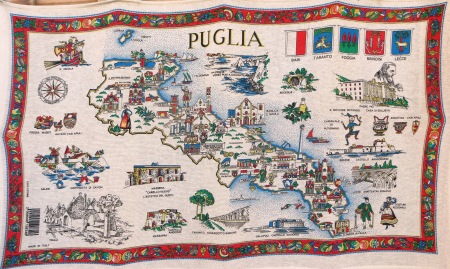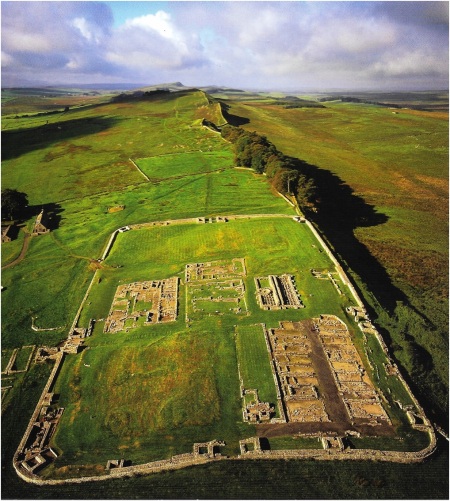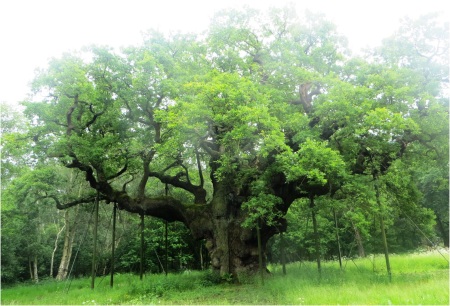Although a lot of people think that the Roman Emperor’s Wall marks the border between England and Scotland it never has and never will because it runs a conveniently short distance between Wallsend near the River Tyne in Newcastle and the Solway Firth in Cumbria.
When it came down to military expediency the Romans didn’t concern themselves too much about geography. The wall is entirely within England and although it is close to Scotland in the west at its eastern end the wall is fully seventy miles south of the River Tweed.
Interestingly the wall was eighty Roman miles, a Roman mile based on 1,000 marching steps or 5,000 feet. The unit of measure, the mile, has many variations, the US mile for example is slightly longer than the UK mile (established by Queen Elizabeth I). At every mile the Legions erected a stone marker – a mile stone to record the distance from London and from Rome.
This was all a bit confusing so in 1791 the French Revolutionary National Assembly adopted the metric system which gave the World the kilometre. Britain was invited to adopt the new system but naturally declined. Over two hundred years later we have Brexit where we still refuse to join in with the Europeans.
Anyway, back to the border – in point of fact in Roman times and for a long time after there never was a border as such between England and Scotland, that came much later in 1706 with the Act of Union which united Scotland with England and Wales to form the Kingdom of Great Britain and the Border forms the boundary of the two separate legal systems.
This is Hadrian, from a statue found in the River Thames in 1834…
The Wall was a defensive fortification in the Roman province of Britannia, begun in AD 122 in the reign of the emperor Hadrian and was the northern limit of the Roman Empire, immediately north of which were the lands of the northern Ancient Britons, people so frightening that even the Romans wouldn’t take them on.
It was a very pleasant day for our visit and the sun was shining but I guess this would have been quite a bleak place two thousand years ago. I imagine a legionnaire waiting for details of his posting and hoping to go Spain or France to the warm inviting beaches of the Mediterranean Sea and bit of sunshine would have been rather disappointed to discover that he was going to the bitter cold north of England to help build a massive stone wall.
At a length of almost seventy-five miles long it is the largest remaining construction anywhere in the old Roman world and it was started and finished in just about six years which is an impressive rate of progress compared to how long it takes to get anything built these days.
A lot of it has disappeared over time, there is very little stone at the eastern and western extremities where it was dismantled during the medieval period as convenient construction material and later on for eighteenth century road building projects. And a lot of what we see know has been reconstructed and rebuilt but never mind I don’t have an issue with that.
Seventy-five miles sounds like a lot of wall but by way of comparison the Great Wall of China is over thirteen-thousand miles long, Donald Trump’s Mexico wall is approximately two-thousand miles and even in England Offa’s Dyke running between England and Wales was one hundred and fifty miles long stretching from the River Mersey in the North to the River Severn in the South. The Maginot Line in France (a sort of underground wall) was nine hundred and fifty miles long but ultimately completely useless because the French didn’t get to finish it and in 1940 the German Panzer divisions simply went around it on their way to Paris.
The Romans were more clued up than the French it seems and the wall goes all the way from coast to coast. They didn’t leave a gap at one end that the Barbarians could conveniently use to get past.
Hadrian’s Wall was built almost completely of stone with a small castle every mile to act as a watchtower and a large garrison fort every five miles which was manned by a cohort of troops numbering as many as eight-hundred. A cohort is considered to be the equivalent of a modern army battalion.
It is possible to visit quite a lot of these old fortress sites and there was one conveniently close to where we were staying.
I didn’t really know what to expect of the wall; when I was a boy I wondered why the Northern Barbarians didn’t just get some ladders and climb over it when no one was looking but here I got to appreciate the massive scale of the thing.
There wasn’t a great deal of it I have to say but there was an information board that explained what it would have looked like.
In this central section, the wall was built on a natural hard granite rock escarpment called Whin Sill which is a volcanic eruption that rises dramatically and vertically out of the ground. If this wasn’t enough, on the northern side the wall comprised a ditch, then the wall, a military road an earth rampart and then another ditch with adjoining mounds. No Welcome Mats and if anyone was going to get over this wall it was going to take a lot more than a ladder let me tell you!
Once its construction was finished, it is thought to have been covered in plaster and then whitewashed, its shining surface reflected the sunlight and was visible for miles around, an extravagant expression of Roman military might and the border of the Empire.
We planned to see more of the wall but then there was an unfortunate incident. We pulled into a shale surface car park and immediately picked up a piece of flint which deposited itself in the rear brake arrangements on the car which required a call to the emergency services and a ninety minute wait for assistance.
With time running out we reluctantly abandoned the wall and continued to Whitley Bay, north of Newcastle where we were visiting family.







 “
“

































































